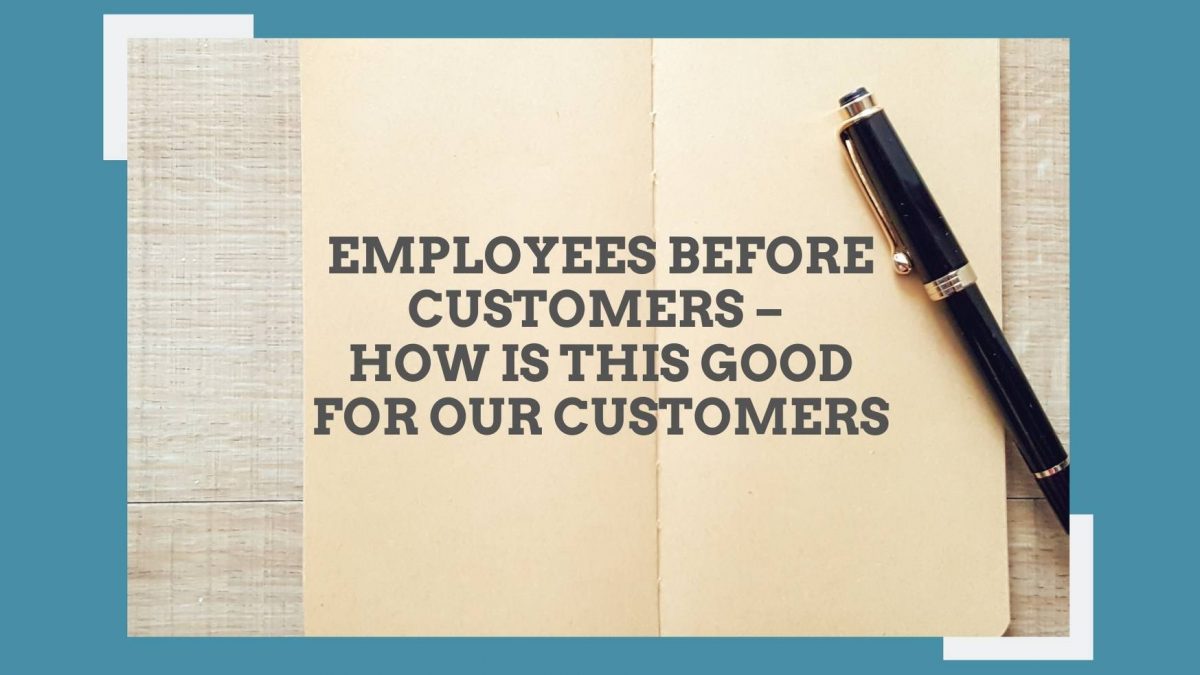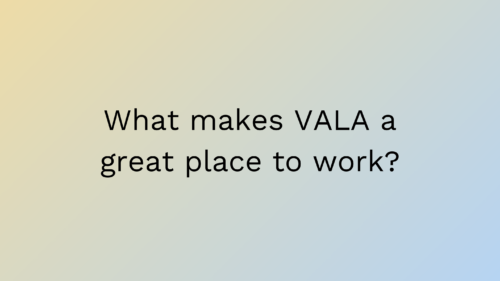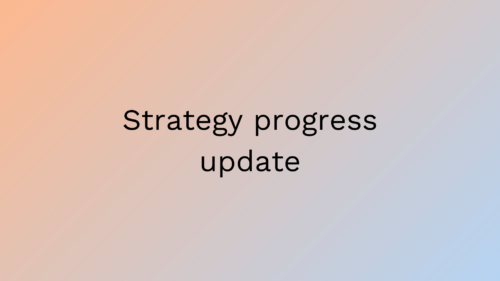Employees before customers – How is this good for our customers?
02.10.2020

Some years ago we made a bold decision, we announced that our employees are prioritised over our customers. I don’t remember exactly when this was, maybe three years ago. Nevertheless, it’s a long enough time period so that we can now reflect how this statement has affected things here at VALA.
In short, most customers have taken this well, some have had mild hiccups, but no one has said (out loud) that they don’t accept this. This post is to demonstrate why we are doing this and how is this good for our customers.
History
Since 2016 we’ve had a vision of being the Happiest company. The expletives around it have changed in time but the core, Happiest company, has remained. It’s quite an ambitious vision. It can’t be reached without exceptional actions. Especially in our field of business, where companies are treating their employees so well to begin with.
We knew that we already did a good job on this front, but it wasn’t enough — we needed a statement that would separate us from other companies. A statement that would prove how we really take that one extra step towards happiness and wellbeing.
That’s how we ended up announcing that at VALA, employees are the number one priority. But how has it gone since then? What have been the consequences?
Diminishing employee turnover rate
We’ve learned that one of the most valued aspects in our customers’ minds is that the people working in their projects stay there. But the reality is that switching between jobs is pretty common nowadays: The less happy employees are at their current job, the more likely they’ll switch to another company. Of course we have had some turnover but it has been very modest. I actually can’t remember a single person ever leaving VALA to a competing company.
But there’s always two sides to things. Because our employees come first, we might take them out of a project they don’t feel good in. However, this happens very rarely because we put so much effort into finding the perfect project for each individual in the first place.
Moreover, if eventually someone needs to change a project, it certainly doesn’t happen overnight. First, we discuss the problems and try to solve them together. Only after it is clear that nothing can be done and our employee is still unsatisfied, it’s time to act on it. More often than not, the perceived problems are of general sort and thus handling them can also improve the overall situation at the project. And finally, many times our people are willing to stay in a project for a certain amount of time to not let the customer down, even if they don’t love it in there.

Our people are where they like to be
At first it can feel negative to our customers that they might not get the expert that they wanted, because he or she chose another project. But when you dig deeper, you’ll realize how this too can eventually be seen as a positive thing.
First of all, there’s the aspect of skills-match. Even though the customer might determine that a particular expert is suitable for the project, the expert in case knows her own boundaries better than anyone else and can say whether the project is too easy, too difficult or just the right match for her skills. Naturally anything else than the last is optimal for the customer. These kinds of situations actually occur pretty often.
Secondly there’s the aspect of culture match. In this case the expert might be even more knowledgeable than with the skills-match. For example, if the industry, the company, the team or the general atmosphere is not a match, the expert is the first one to notice. By letting the expert make the decision of the project, we can avoid failed matches before they happen, or at least as quickly as possible.
By letting the expert choose, we have the best odds of a perfect project-expert-fit that leads to a situation where the expert is happy, motivated and most productive.
Skills of our people
Learning is an important part of meaningfulness at the workplace. By allocating time for learning, we keep our experts motivated and happier. It might feel less than optimal for the customer that the expert is off the project for a day here and there, learning something new.
However, these days don’t cost anything to the customer and in return, the expert comes back to the project with fresh ideas and better skills.

Not a zero-sum game
Some might think that prioritizing our employees would take off hours from the work we do for our customers. It’s fair to rationalize this way, but in our case, it’s not true.
When we started putting in the extra work towards our employees’ wellbeing, we hired more people to the People team and customer manager roles. Because of this, nothing was taken off from the customer work, actually quite the opposite.
As a result, we currently focus more on our customers and on our employees than before. The old saying, happy employees equal happy customers, is now more relevant than ever.




